Astronomer at the Institute of Theory and Computation, Harvard University
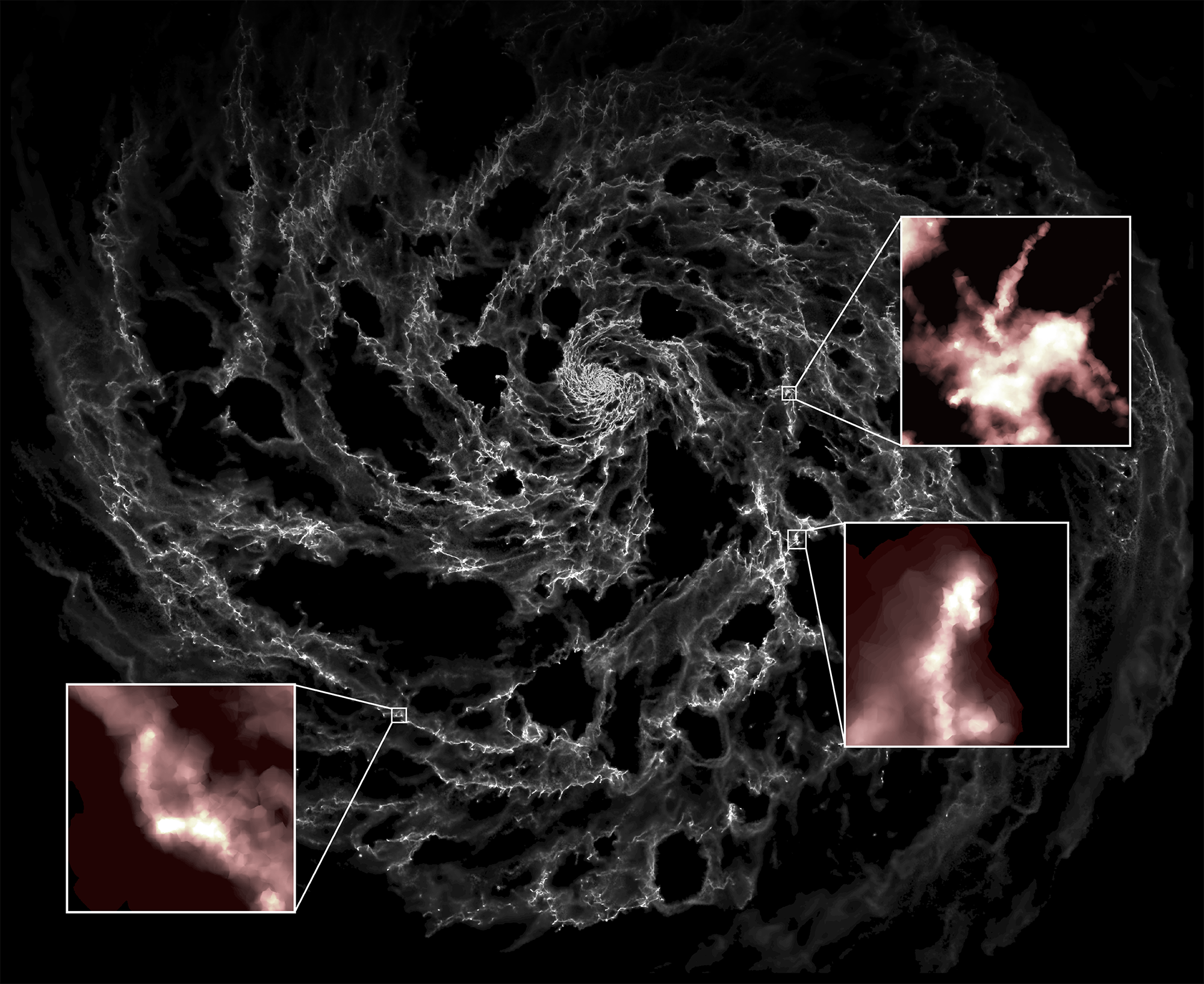
I am an ITC Fellow working at the Institute for Theory and Computation at the Center for Astrophysics, Harvard & Smithsonian. I received my PhD from the University of Heidelberg in November 2020.
The over-arching goal of my research is to understand the cycle of star formation across the wide variety of galactic environments in our Universe. To this end, I use a combination of analytic theory and numerical simulations to study the connection between the large-scale properties of galaxies and the evolution of the molecular gas reservoirs in which stars form.
Publications
Clouds of Theseus: long-lived molecular clouds are composed of short-lived H2 molecules

We use passive gas tracer particles in an Arepo simulation of a dwarf spiral galaxy to relate the Lagrangian evolution of star-forming gas parcels and their H2 molecules to the evolution of their host giant molecular clouds. We find that the chemical lifetime of H2 is much shorter than the average lifetime of its host molecular cloud. Long-lived clouds are sustained by an ongoing competition between (1) the destruction of H2 by stellar feedback, and (2) the accretion of new dense gas from the galactic environment. The fastest-accreting, longest-lived, highest-mass clouds drive supernova clustering on sub-cloud scales, which in turn is a key driver of galactic outflows.
On the scale-height of the molecular gas disc in Milky Way-like galaxies
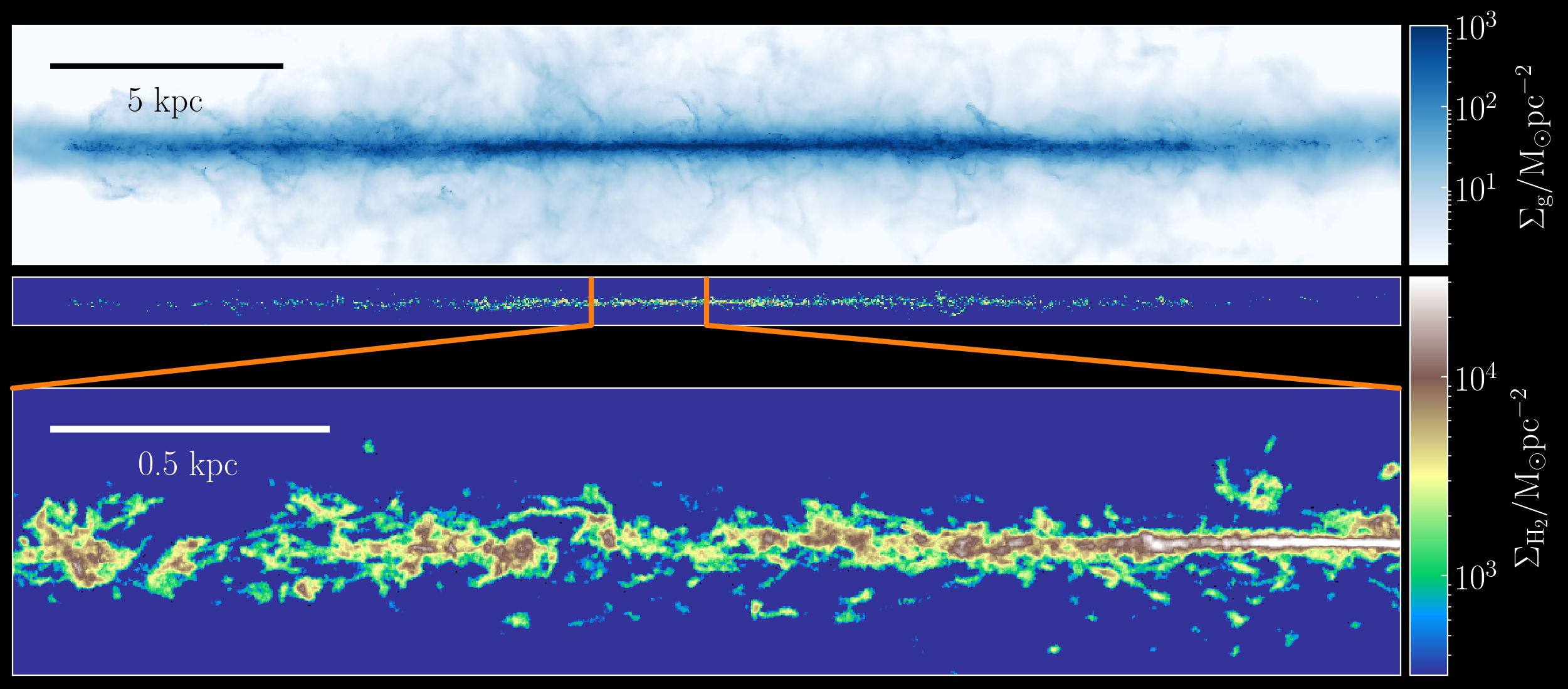
We study the relationship between the molecular disc scale-height and the turbulent velocity dispersion of the interstellar medium. Within the framework of hydrostatic equilibrium, we find that the scale-height predicted using the kiloparsec-scale molecular gas velocity dispersion is an over-estimate of the true value. The prediction using the velocity dispersion between the centroids of discrete giant molecular clouds leads to more accurate estimates.
Momentum feedback from marginally-resolved HII regions
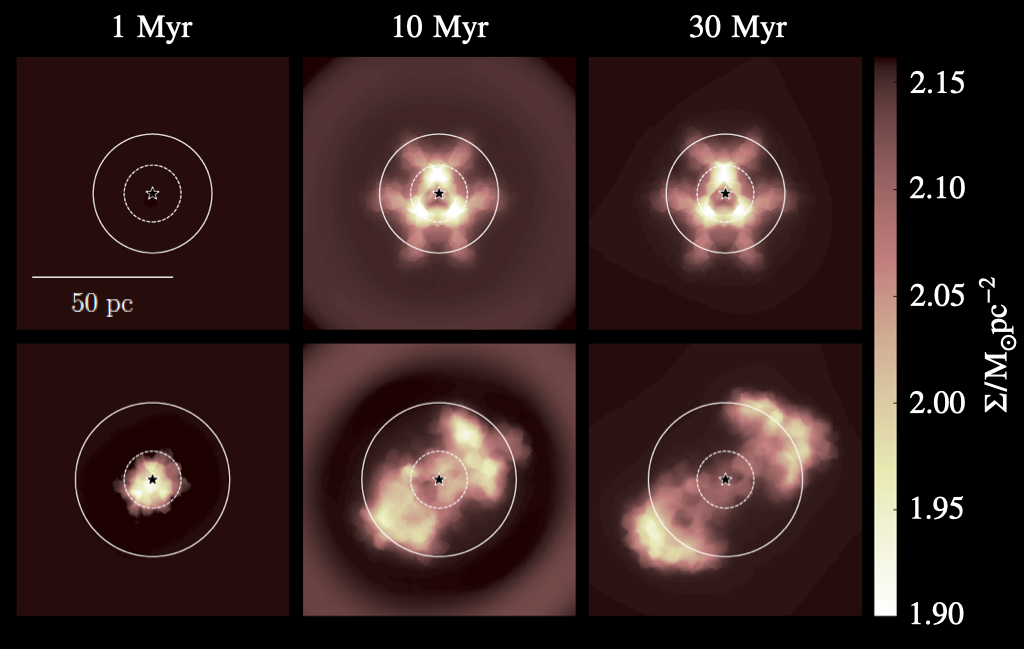
We present a novel and physically-motivated sub-grid model for HII region feedback, within the moving-mesh code Arepo. The model accounts for both the radiation pressure-driven and thermal expansion of the gas surrounding young stellar clusters. Our results highlight the substantial effect that the numerical stellar feedback prescription has on simulations of the interstellar medium. The introduction of explicit radial momentum injection from HII regions halves the average lifetimes of the least-massive molecular clouds, and decrease the mass-loading of galactic outflows by more than an order of magnitude.
A scaling relation for the molecular cloud lifetime
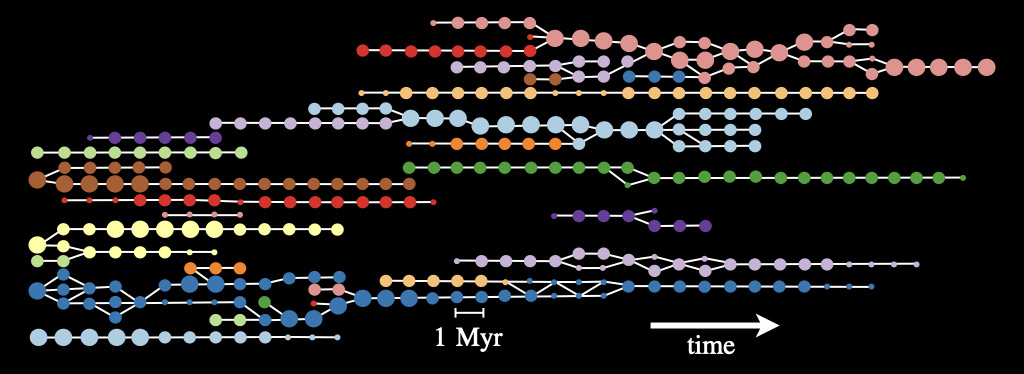
Using the high-resolution simulations of Jeffreson et al. 2020, we study the time evolution of molecular clouds identified across a range of spatial resolutions, from 10 parsecs to 1 kiloparsec. At resolutions smaller than the gas disc scale-height, the cloud lifetime obeys a power-law scaling relation to the -0.3 power of the cloud size. The scaling relation is consistent with over-densities that collapse, form stars and are dispersed by stellar feedback.
How galactic dynamics influences the physical properties of giant molecular clouds
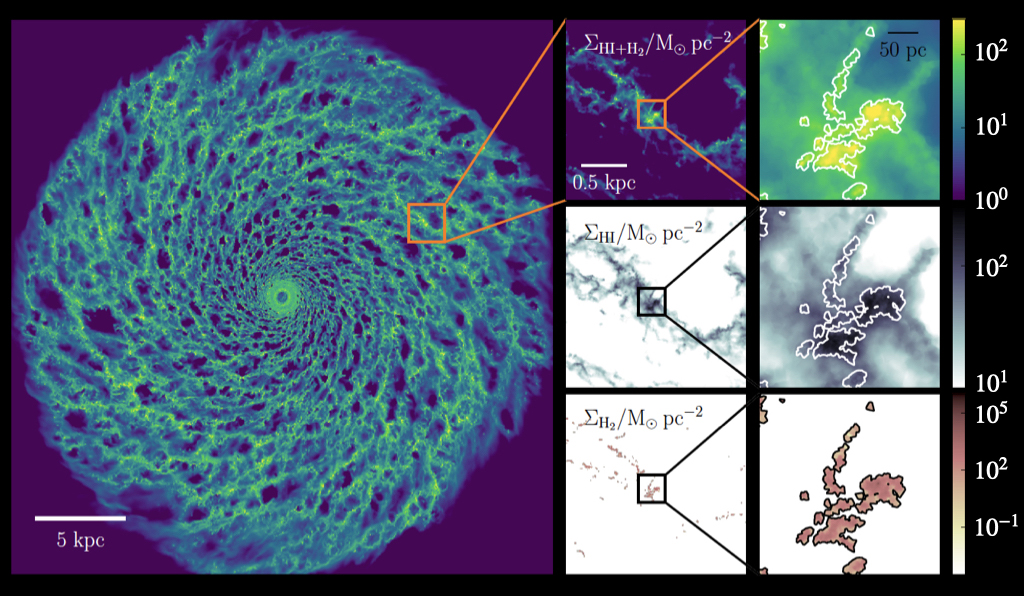
We perform three high-resolution simulations of Milky Way-like disc galaxies with the moving-mesh hydrodynamics code Arepo, designed to span a wide range of galactic-dynamical environments. They collectively yield a statistical sample of ~80,000 giant molecular clouds and ~55,000 HI clouds. We find that the rotational properties of the giant molecular clouds are correlated with the large-scale dynamical environment, while the gravo-turbulent and star-forming properties of the clouds are decoupled from galactic dynamics.
The cloud lifecycle in the Central Molecular Zone of the Milky Way
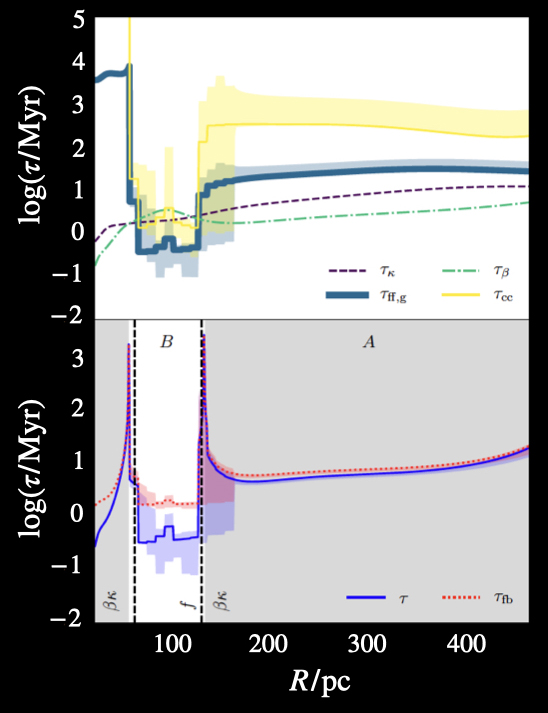
We apply the analytic theory of Jeffreson et al. 2018a to the Central Molecular Zone of the Milky Way. The theory predicts that cloud evolution is dominated by gravitational collapse in the `100-pc stream', producing median cloud lifetimes between 1.4 and 3.9 million years.
A general theory for the lifetimes of giant molecular clouds
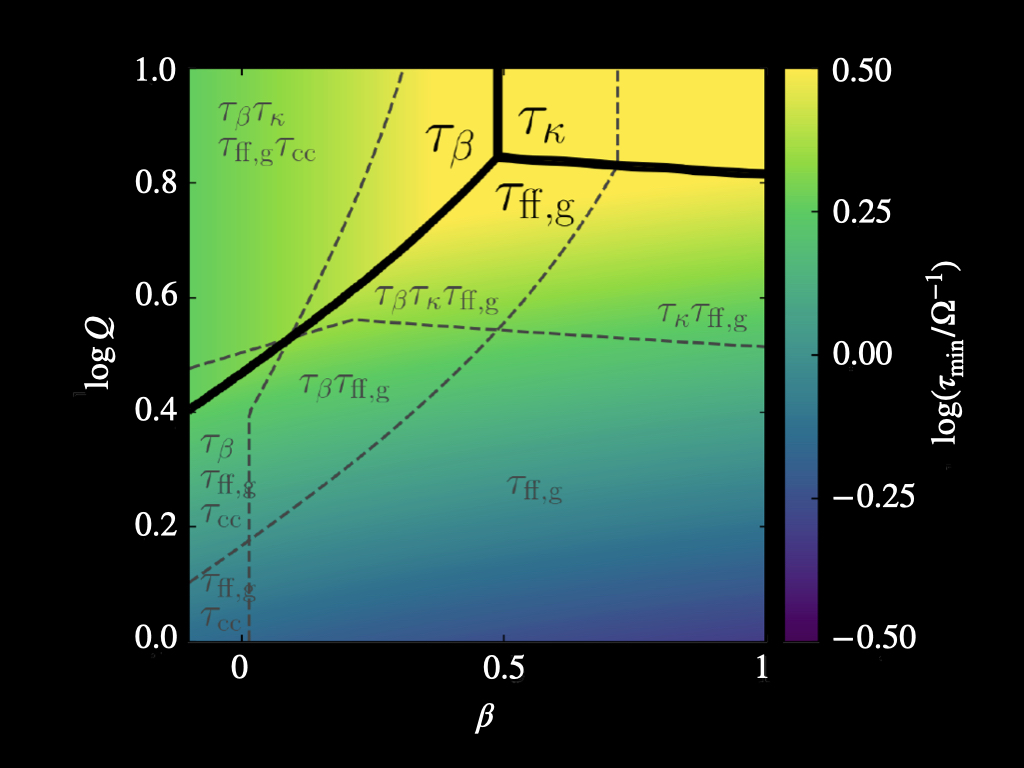
We propose a simple analytic theory for the lifetimes of giant molecular clouds under the influence of large-scale galactic-dynamical processes. Within this theory, the cloud can be derived from measurements of the galactic rotation curve, the gas and stellar surface densities, and the gas and stellar velocity dispersions of the host galaxy. The theory can be tested via direct observations of CO emission, with e.g. the Atacama large millimetre/submillimetre array.